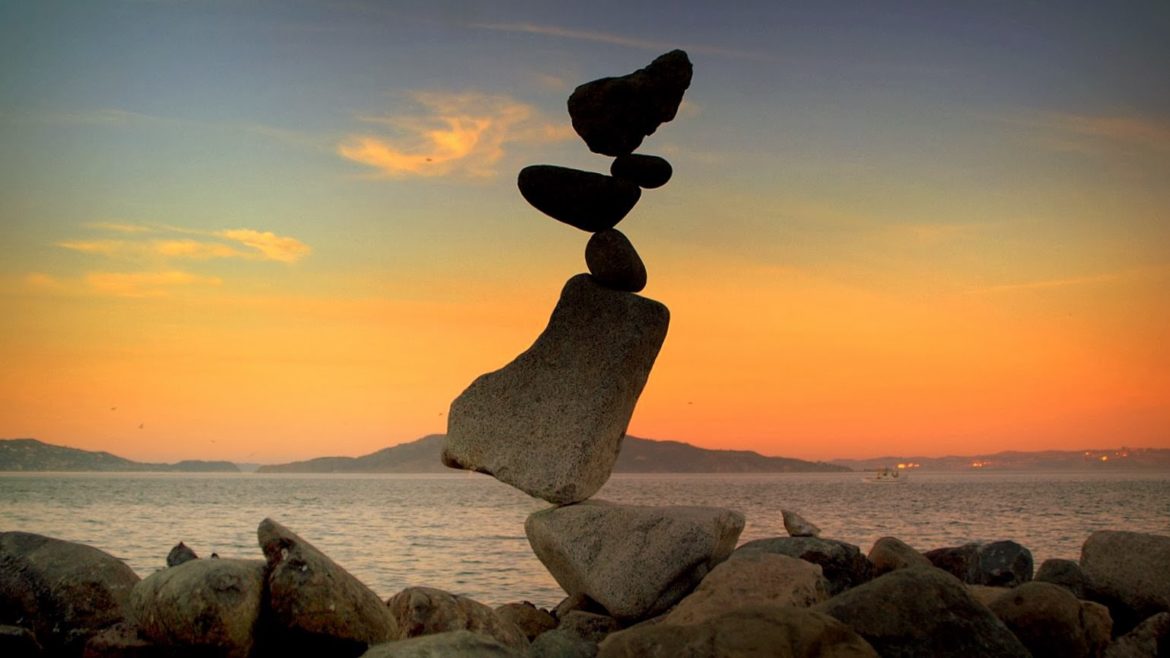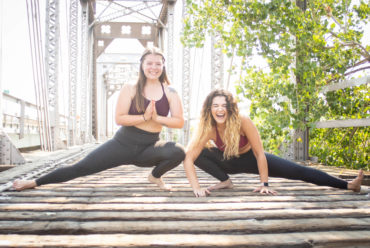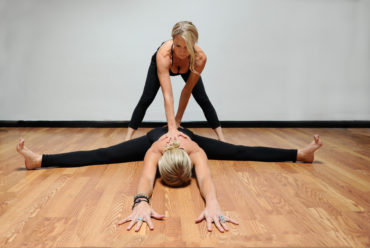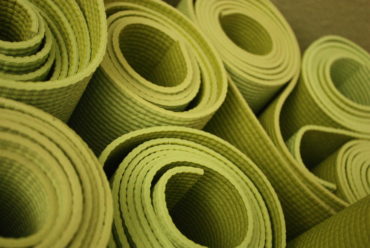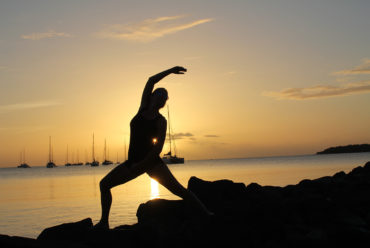Balancing On & Off the Mat
One of my favorite things to do in life is to find metaphors, and yoga is just full of them. Our yoga mirrors our life and our life mirrors our yoga. When we are balanced on our mat, in rhythm with our breath and in the flow; our life seems to follow and vice versa. But how do we maintain the balance?
1. Breath

Credit Richard Legner/ GETTY IMAGES
The inhale. The exhale. The prana and the apana. Too often we forget to deepen our breath in or resist fully exhaling. When moving through balance poses like tree or warrior 3 sometimes it seems like holding our breath will give us some extra stability. But then all too quickly we realize it’s unsustainable as the body begins to tense and we tumble back to the beginning. Steady breath is our literal, sustainable stabilizer! It stabilizes our mental chatter as well as our heart rate. When you really think about it, breath is our sustenance! Breath is our life force! A quick, shallow breath puts us into the chaos of fight or flight mode whereas slow, deep breath can be the first step to a calm, balanced reality. It is always the first step to creating balanced rhythm in any area of our lives. Every steady inhale should equal to a deep, steady exhale. Inhale cool, new breath with new possibilities and exhale hot, stagnant breath with anything we are holding on to and no longer need. Creating rhythm in yoga postures as well as day to day life.
2. Find a Drishti
In Sanskrit, drishti means “sight.” We use drishti in yoga to focus our gaze on an unmoving point. This cultivates concentration and an unmoving peripheral view of our surroundings to stabilize balance. The reason is that if our eyes wander or watch something moving then our bodies will follow; shifting, swaying and finding it difficult to maintain stability. Our gaze can be our source of clarity or of confusion.
The same could be said about our lives, having a drishti or goal to focus on keeps us centered. Focusing on a daily-life drishti makes all the background noise and multitasking fade away. If our gaze is constantly bouncing around we aren’t going to get very far in the direction we want. To find our drishti in life we must know ourselves and ask; where are we going? What is our source of inspiration or energy that moves us through each day? I have many friends who have created Vision Boards for this exact purpose. It’s a great focal point to center action around and can also be a great way to realign if we veer off course. Write out your drishti if that will help you hone in on your end goal and prioritize your daily tasks. Keep in mind that it is impossible to keep your full attention on one thing when juggling multiple plates, checking social media constantly or trying to knock out half of your to-do list at one time… Multi- tasking might wear the cloak of efficiency but it is actually impairing your ability to be efficient! Drishti teaches us the amazing lesson that directing our undivided attention towards one job at a time allows us to become fully present in the NOW moment. You’ll watch the to-do list shrink rather than leaving a bunch of empty checkboxes next to half-finished goals.
3. Deepen roots

credit Jamie Wyeth
In yoga class, a firm foundation is key when it comes to maintaining stability in any pose. Take your time to check alignment & spread those fingers or toes before moving into the full expression of a pose. Like a tree that sends a system of roots deep into the earth so that its trunk can rise up strong toward the light, you need to establish grounding roots that hold you steady as you reach higher towards goals and dreams.
Roots also deliver nutrients to fuel growth. In everyday life, this means nurturing practices that RESTORE you. “Alone-time” is usually the easiest thing to put at the bottom of your list, but in reality it is the thing that enables you to accomplish your list! Start treating time to recharge as sacred. Literally schedule it on the calendar with the same importance as work. Giving ourselves the time to fill up our own cups enables us to be able to pour into others. If we are empty- we have nothing to give.
4. Welcome “the shakes.”
It’s impossible to stand on one foot without some degree of movement or swaying. This is simply the body’s way of calibrating—muscles strengthening, tendons stretching, bones stacking—to strike that marvelous pose. You’re more likely to fall if you stiffen against these movements, rather than embracing them as part of the process of finding that stable center. Finding balance doesn’t mean you have to maintain it at all times. Let that unrealistic expectation go and heave a sigh of relief… You have permission to be imperfect!
And so it is off the mat in the real world, too. Long days at the office, whiny children or unexpected deadlines sometimes shake you to your core, threatening the beautiful balance you’re clinging to. But it’s the tiny calibrations of how you respond in those moments that train your mind not to freak out and lose it all together. Can you learn to pause and see the bigger picture, to realize that this is just a part of the journey back to the middle? Rather than beating yourself up for bad days, embrace the wobbles of your human existence as calibration tools, knowing that you will make your way back home over and over again, simply through your awareness of your Center.
5. Engage your core
Engaging your core is different than sucking in your tummy. Imagine bracing your stomach muscles as if you’re going to bounce a coin off your abs. Roll your shoulders open so your chest appears tall and proud to avoid collapsing in. This engagement radiates power from your center that should leave you feeling rooted and secure. These abdominal muscles surrounding the center of your body are largely responsible for support and stability. When balancing, activating your core muscles keeps your center of balance strong and steady; allowing other muscles in the body move, bear weight, push or pull.
Every day, there are countless commitments and expectations pushing and pulling on us, making it hard to stay connected to our own truth. Often that people-pleasing voice takes over; it’s easy to follow the crowd… But in order to stay centered, you first have to know where your center is. What aspects about yourself are most fundamental to Who You Are? What are your core values and how do you choose to interact with the world? And the one I find myself asking often; Am I acting from the seat of my truth even under stress? Acting from our deepest beliefs can be a difficult choice to make at times. But the harmony of blending thought, word and action radiates an indescribable peace by aligning with your core values.
6. Fall. Get back up.
Falling has been a part of our learning process since we learned to walk. If you never fall out of a pose, it’s time to get braver. Fear of looking silly or incapable in front of others makes it daunting and difficult to break out of the comfort zone. It takes coming to our edge, and sometimes even falling right over it, to truly know our own capabilities or to expand them. That uncomfortable line we walk between our safe zone and the unknown is always where the growth occurs. Being courageous enough to continuously walk that line, being confident enough to fall, laugh and try again, only expands your experience and erases those perceived limitations.
We are all human. We will fall sometimes, if we’re willing to take the risk.
Be willing to take the risk. Balance is not synonymous with perfection. It’s finding harmony with the parts within yourself and thankful joy along the bumpy ride.

credit au.pinterest.com/jzagato/gravity

